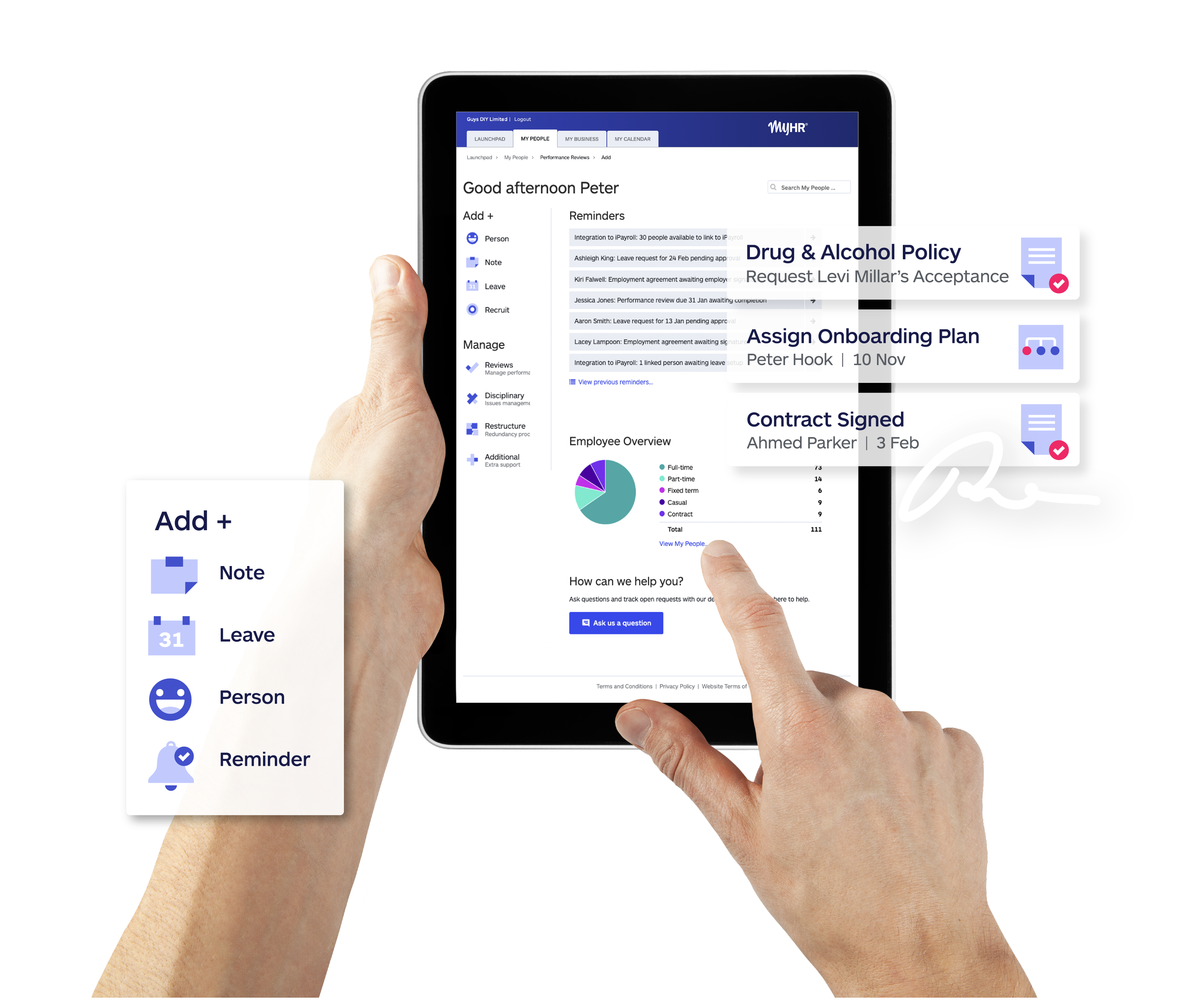
The term "culture" might be easy to define in pleasing words, but it can be much harder to grab hold of in daily business. Company culture can fall into the "nice to have" space, but then be ignored or forgotten when everyone is working flat-tack or times get tough.
But culture is definitely a “thing” and all companies have one. It exists whether you like it or not and shouldn't be neglected, especially during testing times. Quite the opposite, in fact.
A strong company culture is a driving force and underpins a successful, resilient team.
So what can you do? Buy a pinball machine for your people, install a slide between floors, and give everybody unlimited leave? How about starting by paying people correctly and treating them with respect?
We've put together a list of top tips on how Canadian businesses can develop and maintain a strong team culture and positive work environment.
What is company culture?
As we alluded to in the introduction, “company culture” is often an amorphous term that’s difficult to pin down. But you can define company culture as the set of values and standards an organization has (whether they are written or unwritten) and how they are applied and expressed in actions and attitudes.
It is how your employees collaborate with and treat one another, how managers deal with challenges in the workplace, and how leadership steers the organization towards success.
Now that we know what company culture is, we can dive into some tips for fostering a positive one.
1. Get the basics right
This is not the exciting side of people management, but do not underestimate the importance of setting a firm base for the employment relationship by sorting out the basics.
Make sure new people get essential paperwork before their first day of work, like employment agreements and company policies. Be ready for them when they arrive; meet them and make them feel welcome.
Deliver a well-planned onboarding program and establish objectives and key performance indicators at the start of the performance period not 6 months later because you wanted to give the person time to find their feet or 'somebody' is waiting for "somebody else" to sign them off.
This is about the process, organization, and meeting your legal obligations. Some of it may seem administrative and boring but is critical to developing and maintaining credibility, which becomes the foundation of everything that follows. Discipline and good systems make it work.
2. Be human
The employment relationship is a human relationship.
Once the compliance work is complete, try not to manage every situation like you’re in a courtroom drama, even if an employee tries to.
Talk to people like people, and seek to understand. Treat people fairly.
Even in tough situations, with potential dismissal outcomes, little is gained by behaving like the company is an army and you're a military interrogator.
3. Listen
When a problem or complaint is raised, don't become defensive; listen to what is being said and try to find beneficial solutions.
Even if the complaint is incorrect or ill-informed, try to understand where it has come from so you can avoid it happening again.
4. Have a clear strategy and align expectations to this
Knowing where you want to go will help you understand what you need to do. When a business strategy is clear, it will shape culture, for example, whether you seek aggressive growth or market consolidation or innovation.
A clear strategy then informs the design of your organization, which then informs all other people decisions. You can hire people who will help deliver it and support the company culture. Team members will know where the company is going and how their efforts contribute. Management and leaders can be genuine, not fake.
In a strong and positive culture, everyone knows what to expect and what is expected.
5. Manage problems swiftly
Allowing behavior that is inconsistent with the company's values or at odds with the workplace culture is incredibly damaging, no matter how functionally proficient a person may be.
There is no excuse for bad behavior. Deal with issues quickly and ethically. Remember the focus is on the wider team, not just the badly-behaved employee who needs performance management or disciplinary action.
This can be hard to get your head around when somebody is otherwise good at their job, but it is essential to maintaining a strong culture.
Learn more about managing employee issues.
6. Expect your people to succeed
Some business leaders have a mindset that the employee needs to prove themselves worthy of the job they have been given (many leaders might not even acknowledge or recognize that they see it this way).
What does this mindset say about your decision to hire the person?
Instead, the direct opposite should apply. Think like: "I have no doubt you will do well in all aspects of this job, just let me know what you need from me to make it happen. I’m here to support you, train you, develop you."
Foster an attitude of trust and support, indicative of a high-performance team, not an attitude of distrust and political point-scoring.
Then only if somebody doesn’t perform, you can revert to point #5 and manage any problems before they get bigger.
Learn more about creating a high-performance environment.
7. Look after your team
We often talk about employee retention in terms of performance and productivity, but your talented team members are often the biggest culture champions as well. They motivate others, set an example, and embody the organization’s values.
The flipside to this is that people will stay loyal to a company that has a supportive work environment and good culture. And this should be fairly obvious: it’s nearly impossible to build a thriving team culture if you’re regularly losing good staff and having to find replacements.
8. Be safe
Safety is a fundamental part of any strong culture. Safety to speak up, safety to take risks, safety to explore new ideas, emotional safety, physical safety, and safety to be different. Even safety when being managed out of the company.
Nothing supports a good company culture like a true sense of safety, and research has proven that when employees feel safe and supported by their employer, they are far more engaged and loyal (and engaged employees are much less likely to have workplace safety incidents, so it’s a win-win).
9. Recognize individual contributions
To build a thriving culture, you need your employees to be truly connected to it. No amount of talk, fanfare or pressure can make your people feel they are an integral part of the team
Recognizing and rewarding team members plays a key role in improving employee connection, motivation, and performance. It’s about acknowledging the hard work and commitment people bring to the organization and how they contribute to its success.
An employee recognition program will formalize your reward system, but even more ad-hoc methods can work. The aim is for your employees to feel valued and that everyone (not just your stars) is responsible for creating and celebrating success.
10. Seek to influence culture not own it
Culture cannot be owned by any department or an appointed individual. Culture is influenced by leaders, squeaky wheels, innovators, accepted and tolerated behaviors, unspoken responses, hiring and promotion decisions, and much more.
Culture needs to be genuine, organic, and built by a team. It’s influenced by many things, never just the HR or management function.
Not everybody will necessarily like your company culture, but it is worth holding onto if it is not unethical, damaging or toxic.
Accept that not everyone will be a flag-bearer and some people will choose to opt-out; if the culture is strong, this is a good thing for everybody.
Don't confuse strong culture with uniformity. Diversity in all its expressions is an essential aspect of a thriving, supportive company culture, and it's a cornerstone of any innovative business.
Examples of how a strong company culture contributes to a positive work environment
- Mark makes a mistake in his monthly reporting, accidentally over-reporting revenue in a management meeting. Because he feels safe and supported in his workplace, he is able to own up to the error and make the management team aware of it, rather than hiding it and hoping it isn’t discovered.
- Riley and Georgia disagree on how an important project should be designed and delivered. Rather than turning into a personal dispute that hampers production, the team culture of fairness and collaboration allows them to air their respective viewpoints. Riley concedes that overall, Georgia’s solution will work best (with a few of her tweaks).
- The Rugged Shoe Co. has a reputation for being a great place to work. When one of the lead designers, Riki, decides to leave to go back to university, the company begins recruiting for a replacement. Despite a skill shortage, the company gets a lot of solid applications and finds a replacement with similar experience, ability, and values as Riki.
Still not sure if your workplace culture is all it can be? Download our free guide on identifying signs of poor company culture and how to turn it around.




